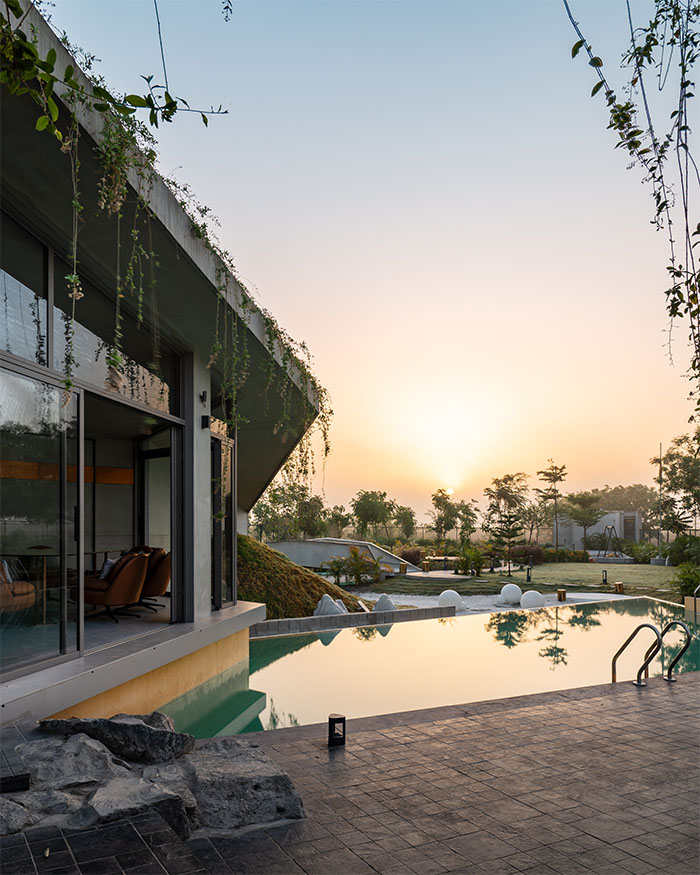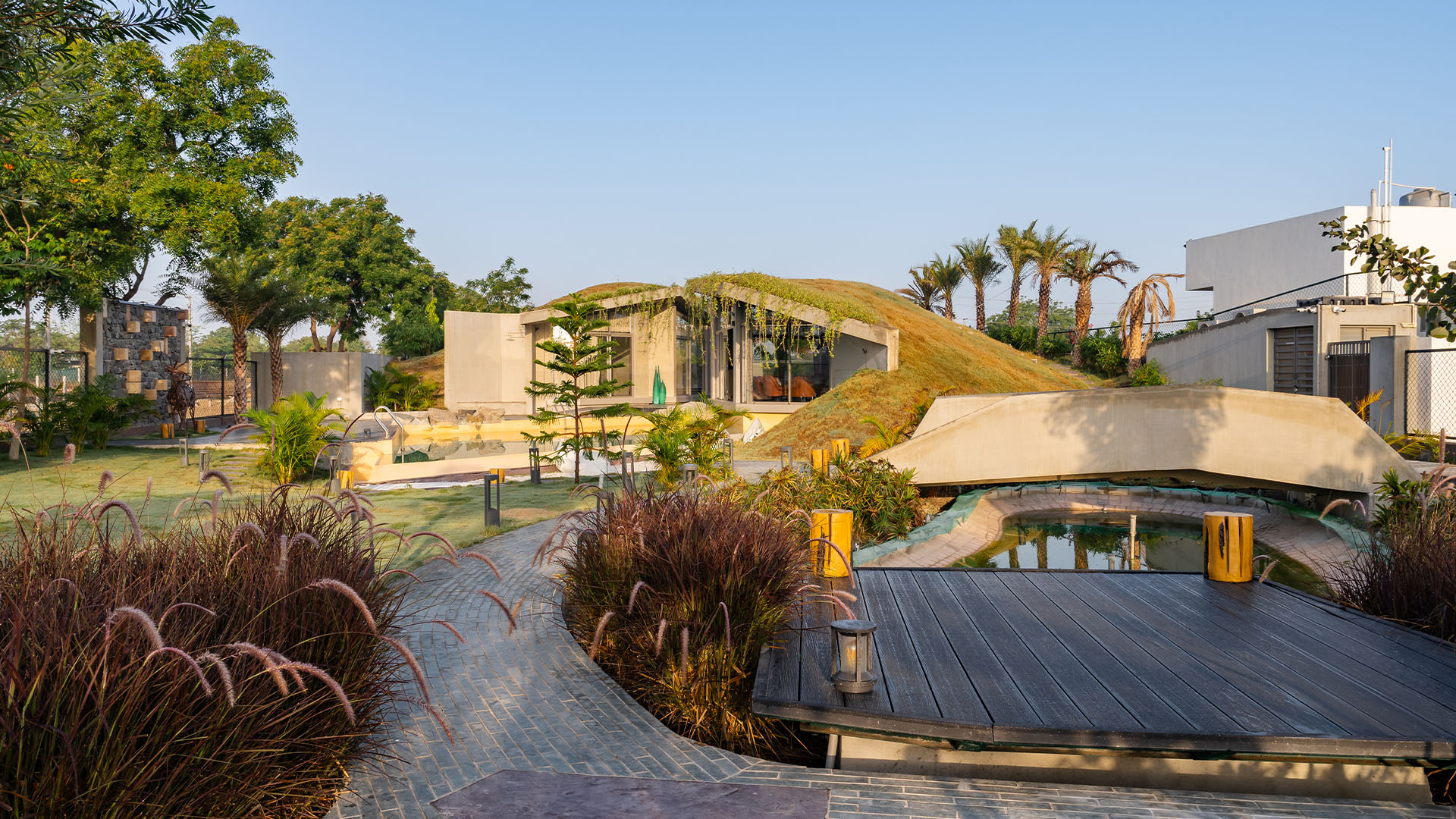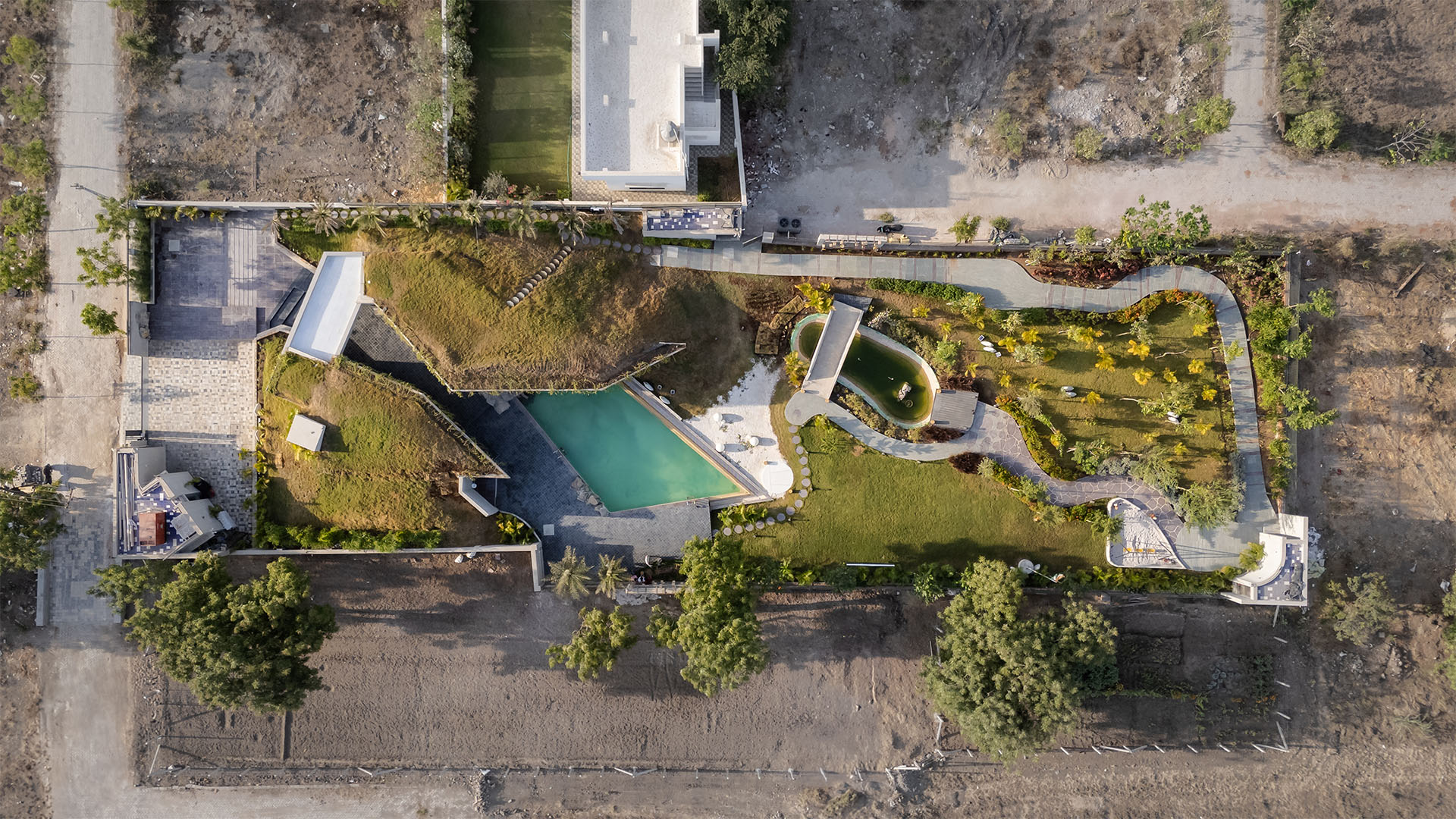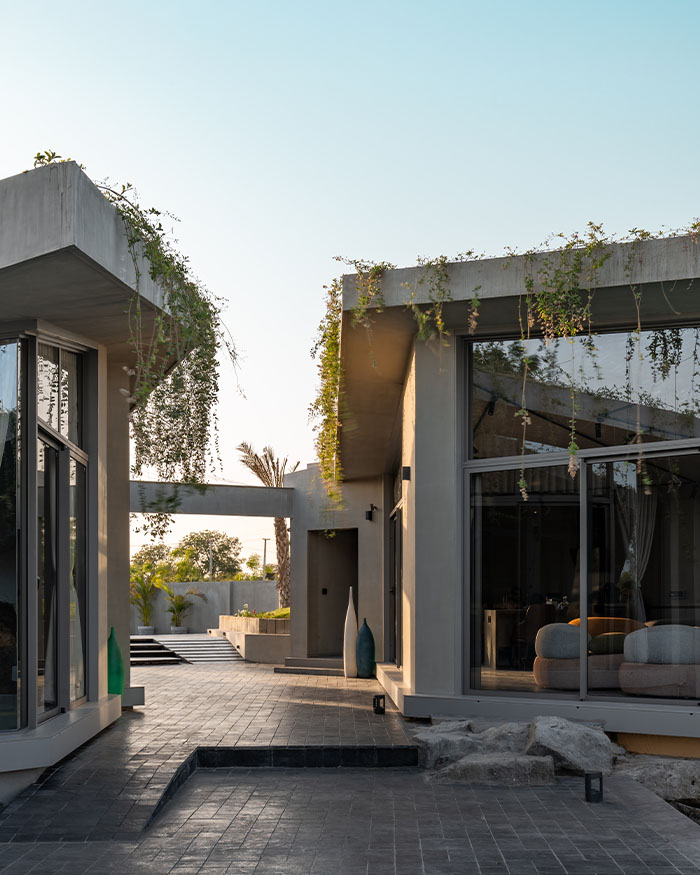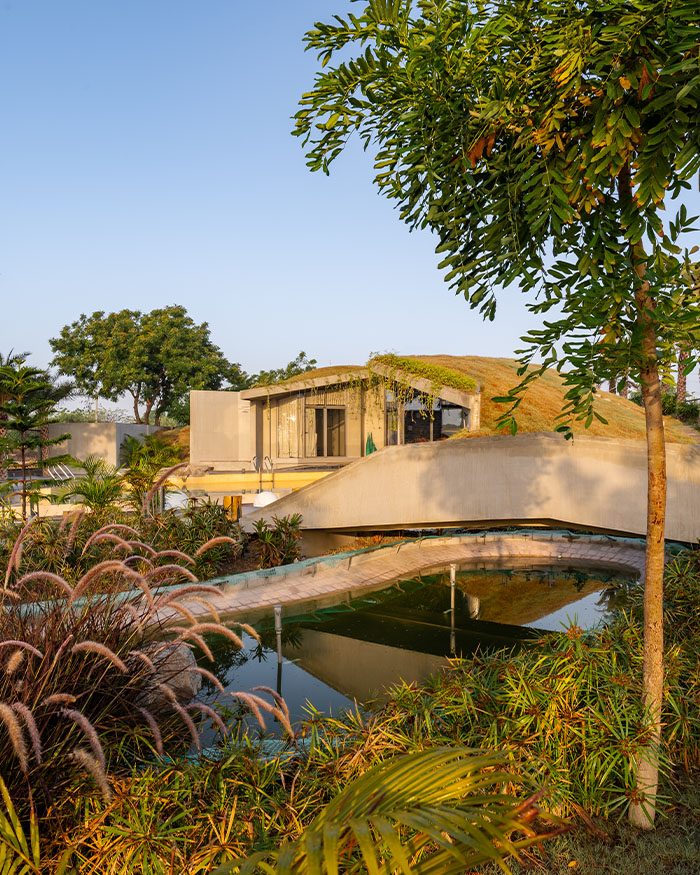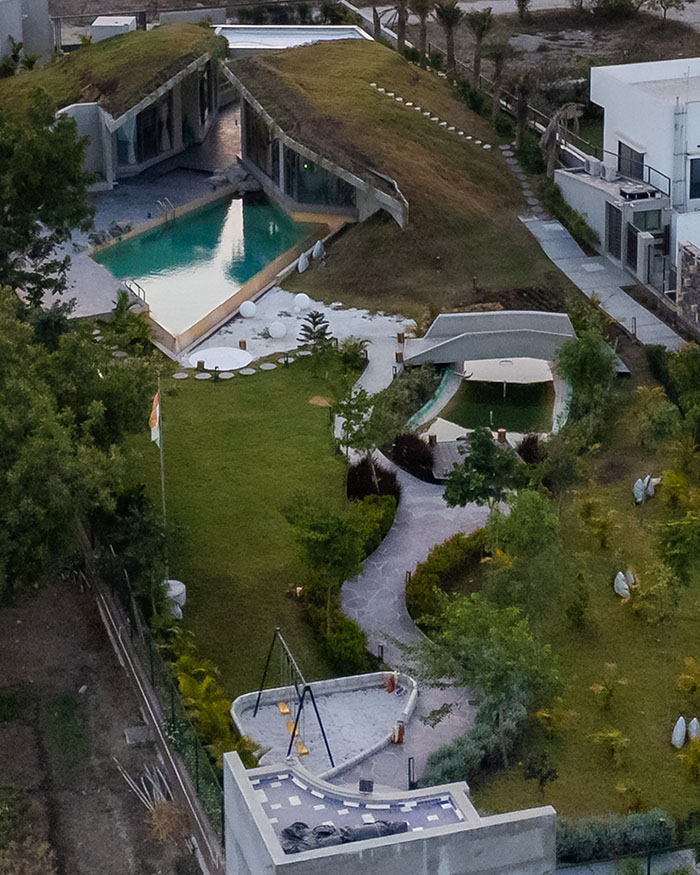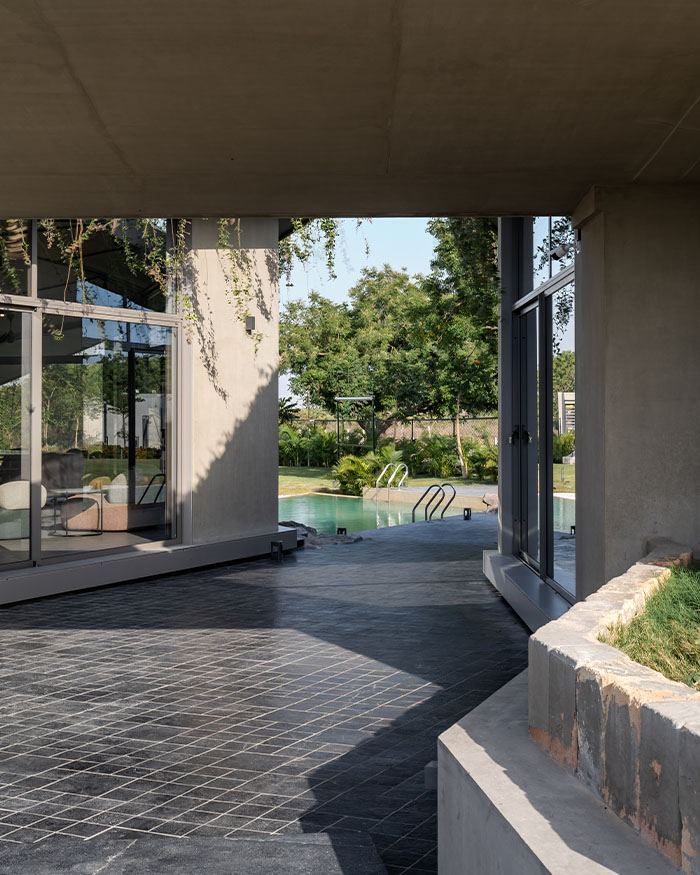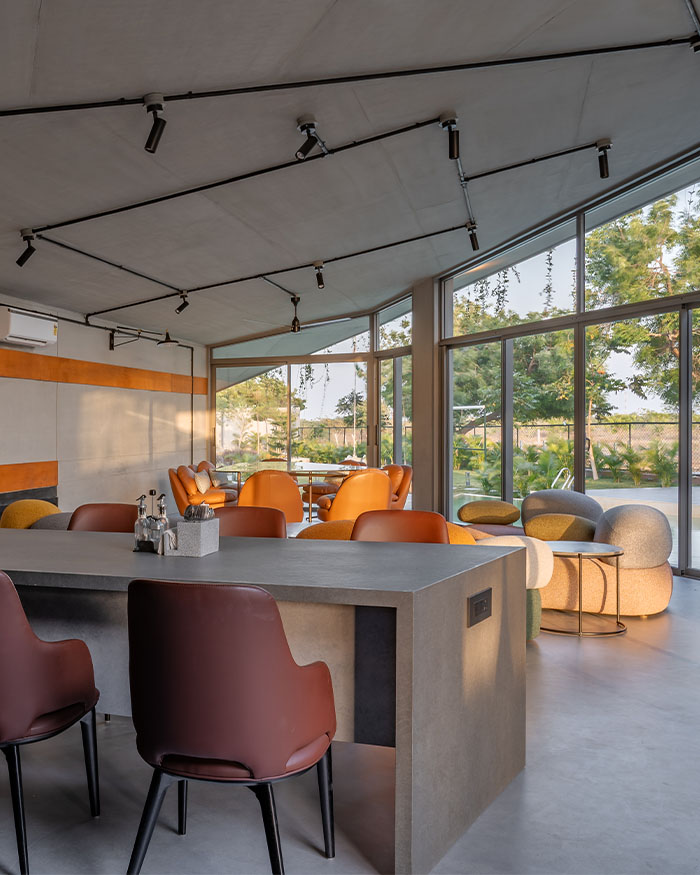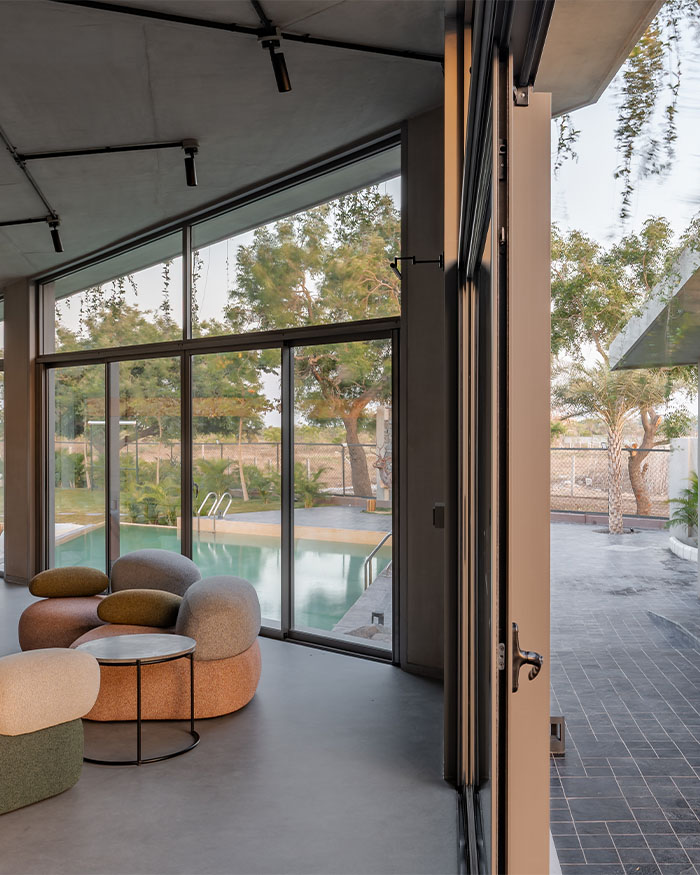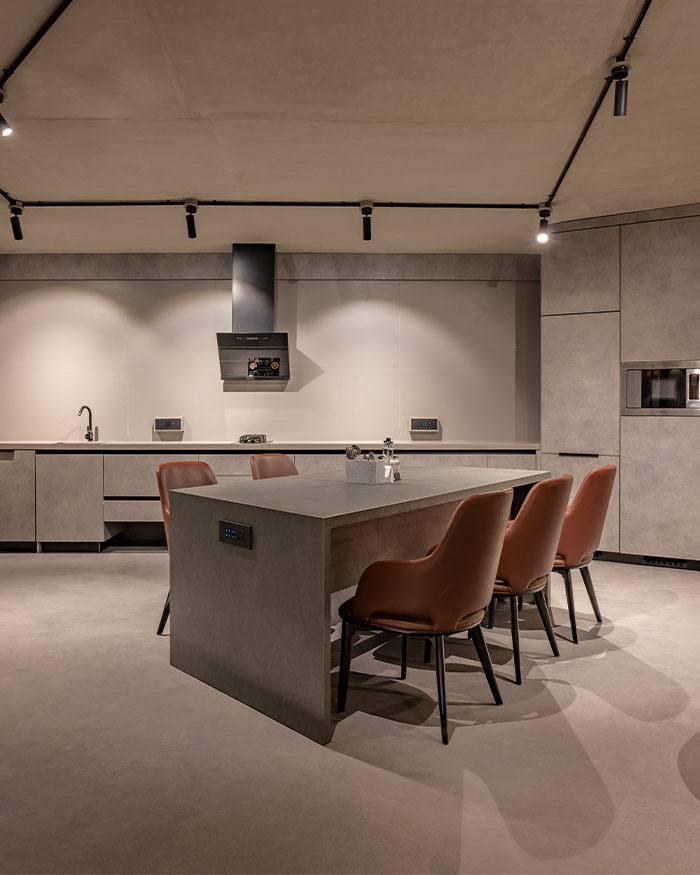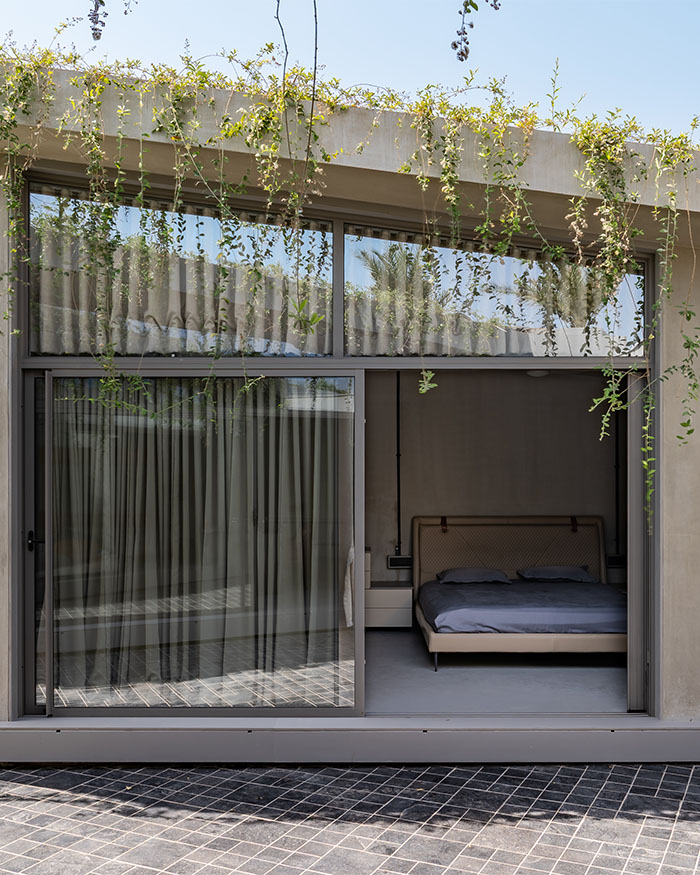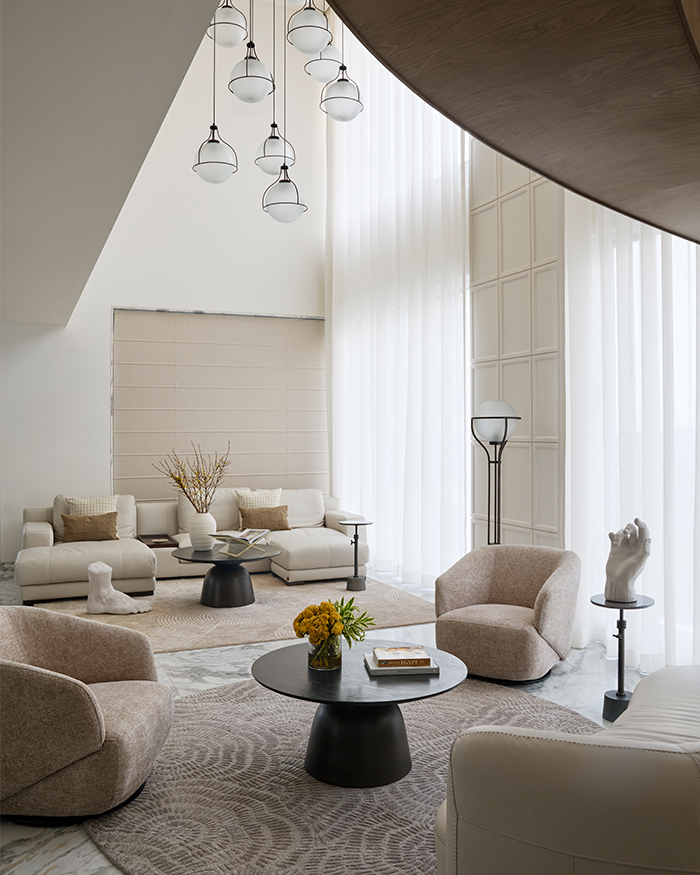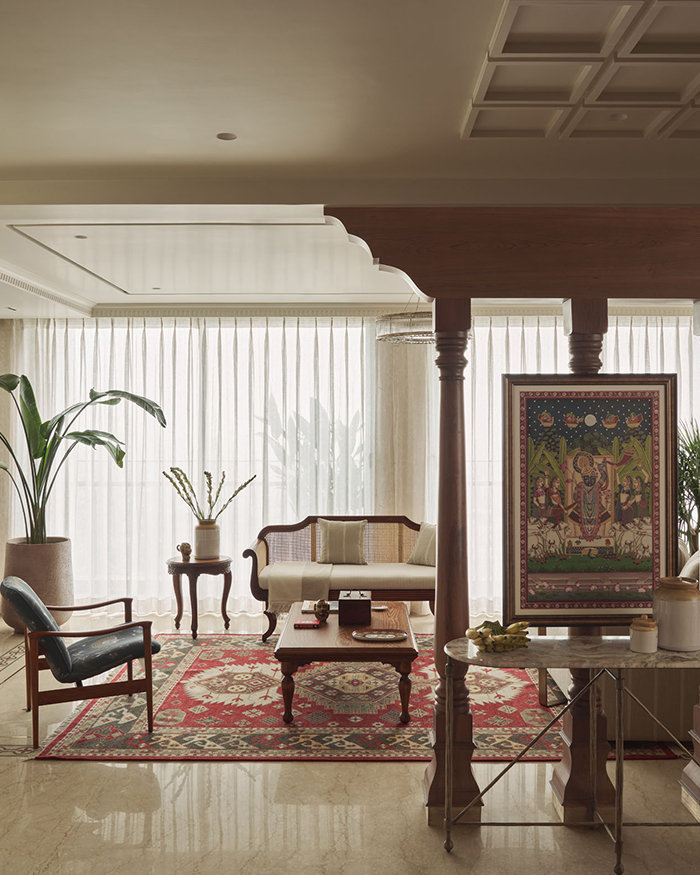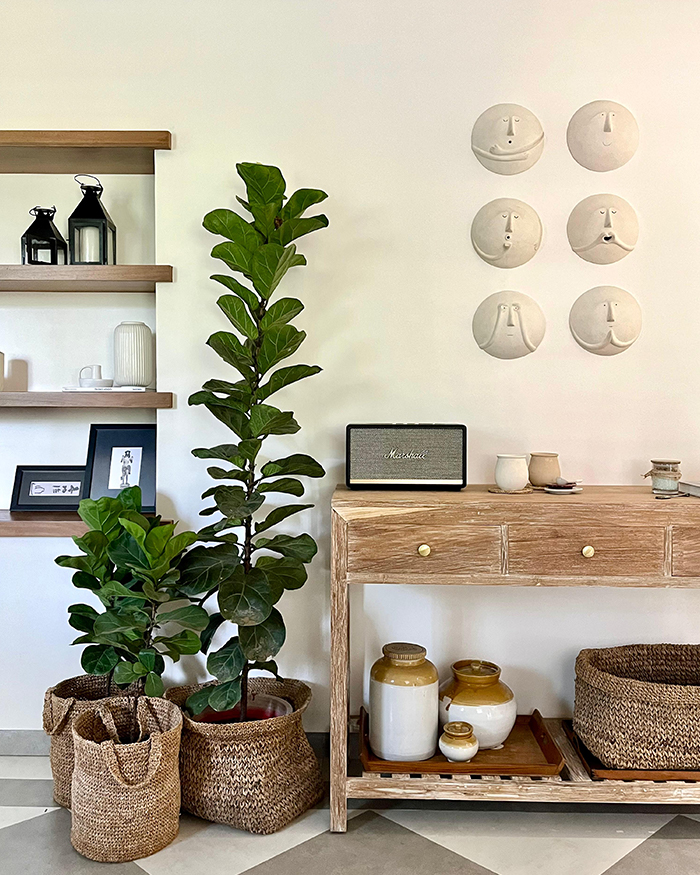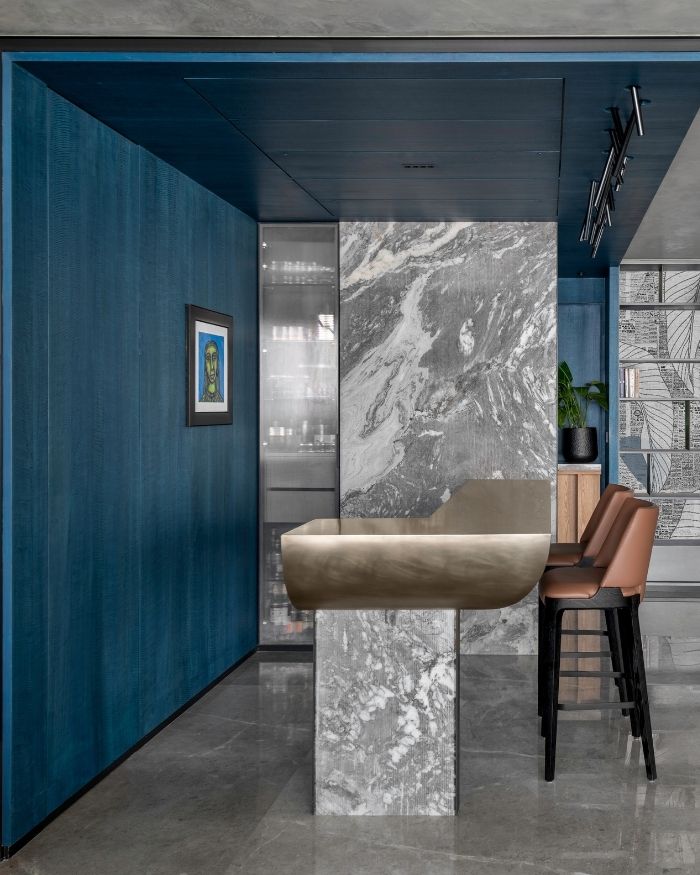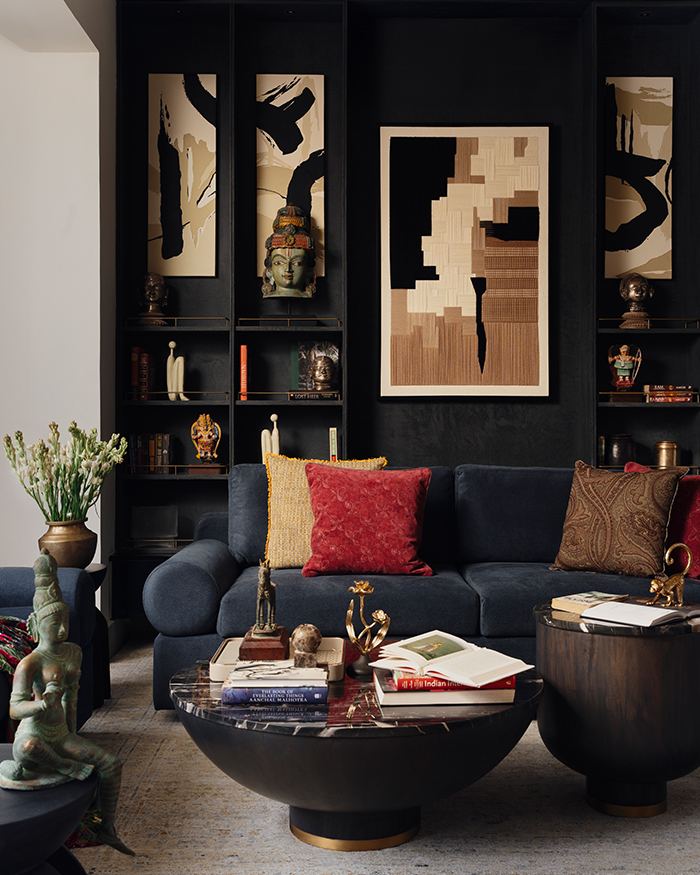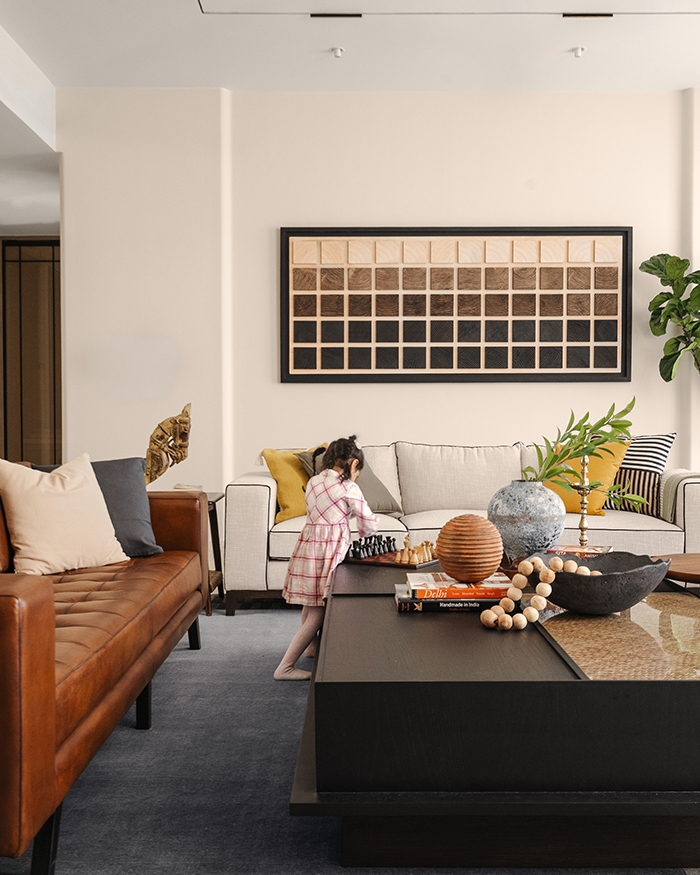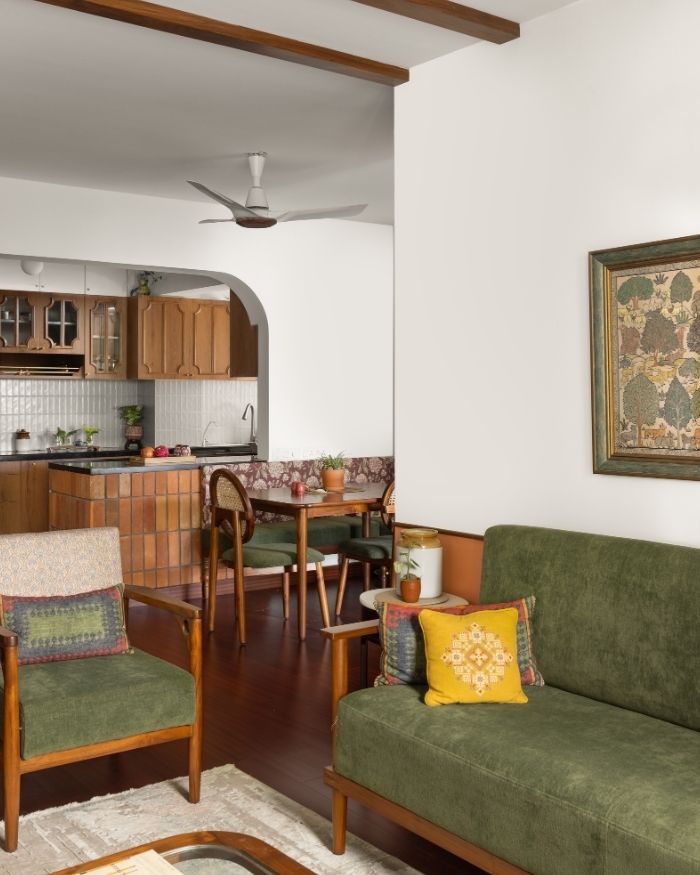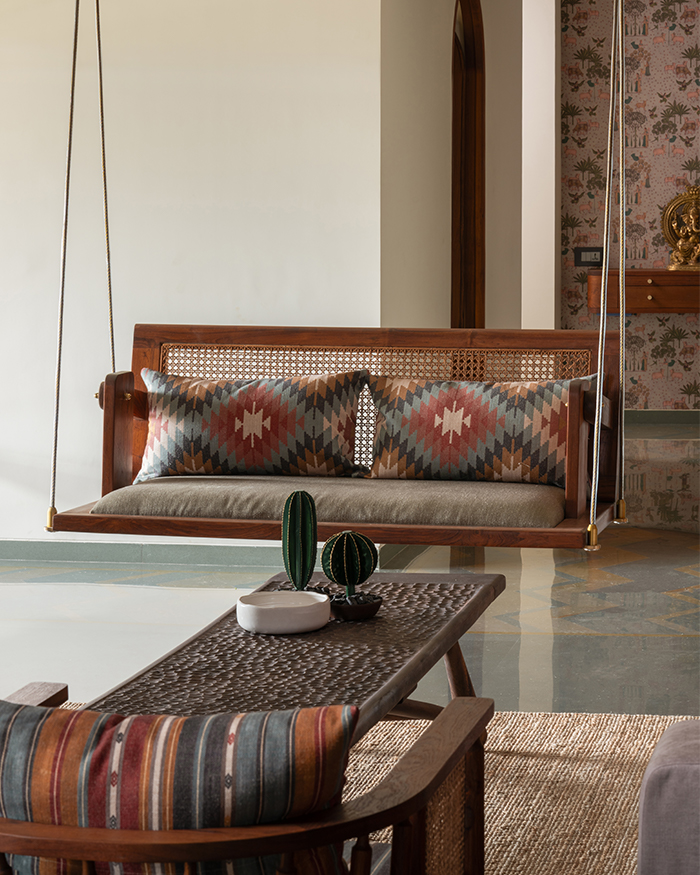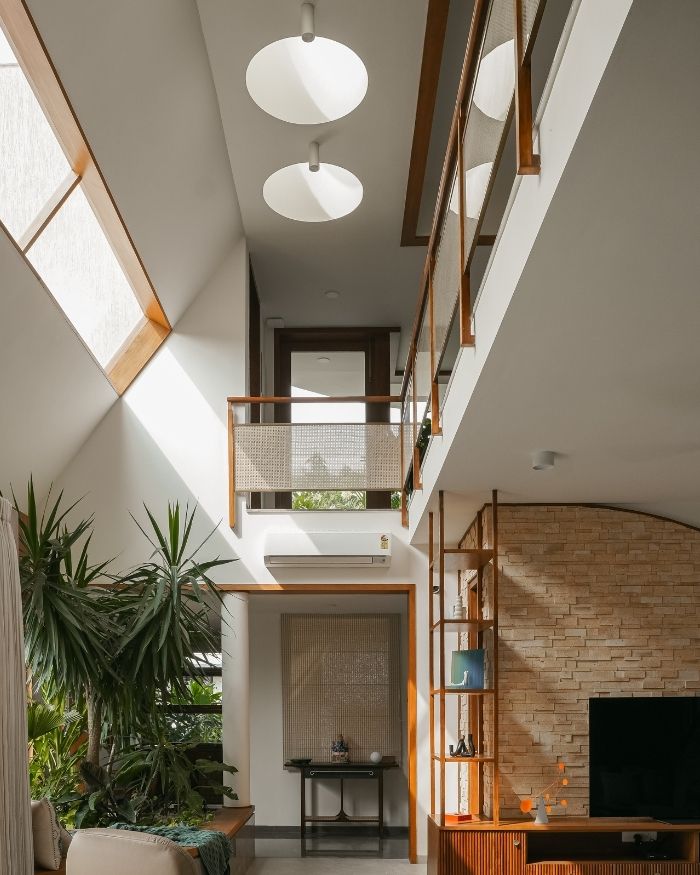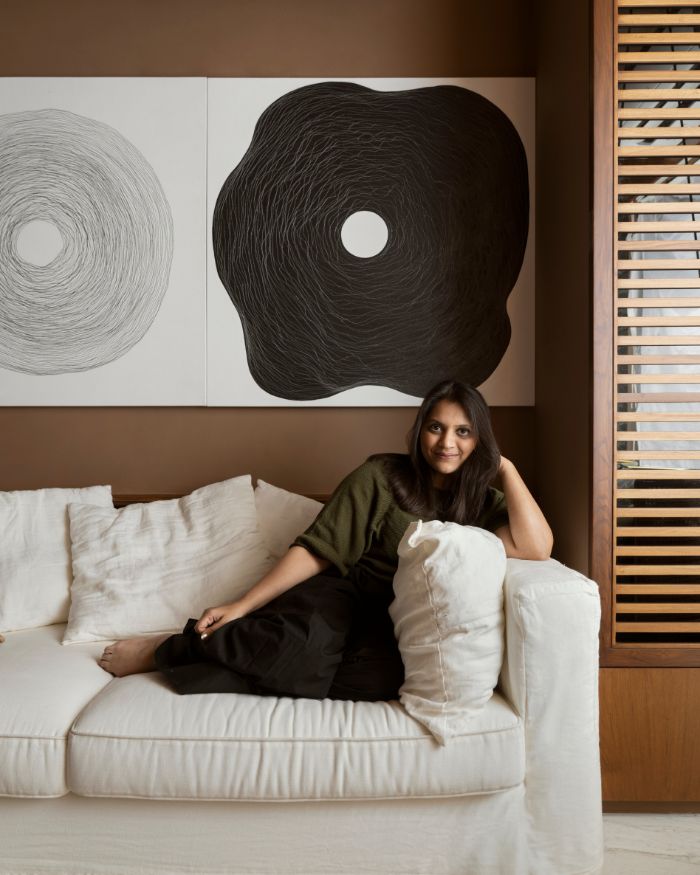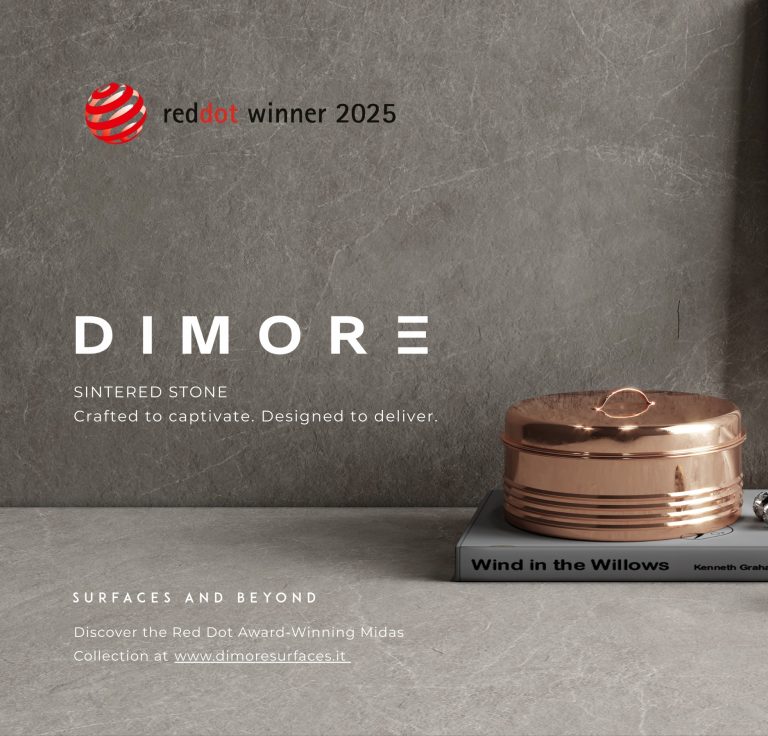FORM AWAY FROM CONVENTION
“From the outset, it was clear this wouldn’t be a conventional project,” say Sweta, Darshan and Pragnesh Desai alongside Mitesh Gadhiya of Design Paradigm and Indoors Design. They continue, “There was no large agency steering the vision, no specialised execution team handling logistics — just three key forces: the client, the architect, and the builder. Together, we approached the design process as a collaboration rather than a commission.” This collapsing of distinctions between design and making became the driving force.
Shifting between its appearance as a static whole and as a series of moments, the concrete structure folds itself into an origami-like appearance. Planes appear split, displaced, almost geologically forced apart, creating voids that are neither room nor corridor. “The in-between spaces, the ones that aren’t quite indoors or out, not fully public or private, were both the most enjoyable and the most demanding to design,” the architects reflect, “These alcoves had to feel effortless, almost incidental, while still being entirely intentional. They resist labels but invite use.” This withholding of prescriptive function resists typological closure, prioritising human movement over formal permanence. A space that indulges perchance encounters and discovery.
NEGOTIATIONS WITH NATURE
Rather than standing against its landscape, the house operates as an extension of it. Earth berms crawl concrete edges, wind tunnels through fissures and the pathways follow the topography. Nature becomes an active participant in the architecture’s events. Through mindful landscaping honouring indigenous plant species, the grounds are alive through the year, blooming and growing through the seasons.
The house is less a shelter from nature than a deliberate scaffold for its performance, enabling moments of unpredictability and pause. It is through this porosity that the architecture is constantly rewritten by shifting light, weather and the spontaneous actions of its inhabitants. Presenting its anatomy as a playscape of the elements. The designers frame it as a refusal of linear authorship or the trepidations of conformity: “Precision was crucial, but the outcome is a result of execution and imagination never being at odds. This was about allowing an idea to take shape with care, clarity and courage.”
